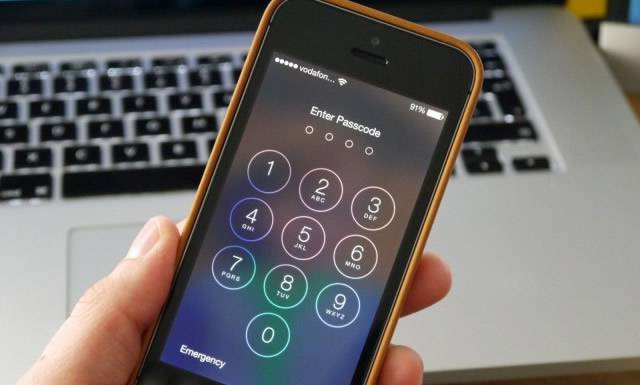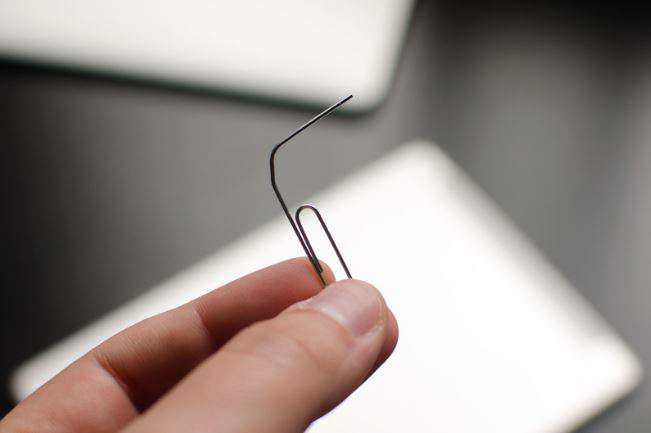In today’s digital age, we capture countless photos on our iPhones, but sometimes we want to transfer these photos to our Mac computers for various reasons. While iCloud is a convenient option for syncing and accessing photos across devices, it requires an internet connection and may not be suitable for everyone. In this blog post, we will explore alternative methods to download photos from an iPhone to a Mac without using iCloud. Whether you want to free up storage space on your iPhone or simply prefer a different approach, these methods will help you achieve your goal.
The Challenge of Downloading Photos From iPhone to Mac
- Difficulty transferring photos from iPhone to Mac without iCloud.
- Limited storage space on iPhone.
- Lack of internet connectivity or slow internet connection.
- Concerns about privacy and security when using cloud-based services.
Video Tutorial:
Method 1. How to Download Photos From iPhone to Mac using iTunes
iTunes is a well-known software developed by Apple, primarily used for managing iOS devices. Here’s how you can use iTunes to transfer photos from your iPhone to your Mac:
Pros:
– Simple and straightforward process.
– No need for an internet connection.
– Can transfer photos in original quality.
Cons:
– Requires a USB cable connection.
– Not ideal for users who prefer wireless methods.
– May require some initial setup.
1. Connect your iPhone to your Mac using a USB cable. Launch iTunes if it doesn’t open automatically.
2. Click on the device icon in the top-left corner of the iTunes window.
3. Select the “Photos” tab in the sidebar.
4. Check the box next to “Sync Photos” or “Selected albums” depending on your preference.
5. Choose the albums or folders you want to sync from your iPhone to your Mac.
6. Click on the “Apply” or “Sync” button in the bottom-right corner to start the transfer process.
Method 2. How to Download Photos From iPhone to Mac using AirDrop
AirDrop is a wireless file-sharing feature available on iOS and macOS devices. It allows you to send files, including photos, between supported devices in close proximity. Follow these steps to use AirDrop for transferring photos:
Pros:
– Quick and easy transfer process.
– No need for cables or additional software.
– Can transfer multiple files simultaneously.
Cons:
– Both devices need to have AirDrop enabled and be in close range.
– May not be suitable for large photo collections.
– Limited to Apple devices.
1. Enable AirDrop on both your iPhone and Mac. On iPhone, swipe up from the bottom of the screen to access the Control Center, then tap on the AirDrop icon to select “Contacts Only” or “Everyone”. On Mac, open Finder, click on “AirDrop” in the sidebar, and choose “Contacts Only” or “Everyone” under “Allow me to be discovered by”.
2. Open the “Photos” app on your iPhone and select the photos you want to transfer.
3. Tap on the share icon (square with an arrow pointing up) and choose your Mac from the list of available devices.
4. On your Mac, you will receive a notification with a preview of the photos. Click on “Accept” to download them to your Mac.
Method 3. How to Download Photos From iPhone to Mac using Google Photos
Google Photos is a cloud-based service that offers free storage for high-quality photos. While it requires an internet connection, it can be a convenient option for users who prefer cloud storage. Here’s how you can use Google Photos to download photos from your iPhone to your Mac:
Pros:
– Automatic backup of all your photos.
– Syncs across multiple devices.
– Additional editing and organization features.
Cons:
– Requires an internet connection.
– Limited storage space for original quality photos (unless you opt for a paid plan).
– Privacy concerns for some users.
1. Download and install the Google Photos app on your iPhone from the App Store.
2. Open the app and sign in with your Google account or create a new account if needed.
3. Open the “Settings” tab in the app and enable “Backup & sync”.
4. Wait for the initial backup to complete. This may take some time, depending on the number of photos.
5. On your Mac, open a web browser and visit the Google Photos website (photos.google.com).
6. Sign in with the same Google account used on your iPhone.
7. You should see all your iPhone photos in the Google Photos library. Select the photos you want to download and click on the download icon.
Method 4. How to Download Photos From iPhone to Mac using Third-Party Apps
Apart from the methods mentioned above, there are various third-party apps available that can facilitate the transfer of photos from your iPhone to your Mac. These apps often provide additional features and flexibility compared to the built-in options. Here’s a general outline of the process, but note that specific steps may vary depending on the app you choose:
Pros:
– Additional features and customization options.
– Flexibility to choose the transfer method that suits your needs.
– Can support non-Apple devices.
Cons:
– Requires downloading and installing third-party apps.
– Potential compatibility issues with different apps and devices.
– Some apps may have subscription fees or in-app purchases.
1. Research and choose a third-party app that suits your requirements. Some popular options include PhotoSync, iMazing, and AnyTrans.
2. Download and install the chosen app on both your iPhone and Mac.
3. Follow the app’s instructions to establish a connection between the devices.
4. Select the photos you want to transfer and initiate the transfer process within the app.
5. Depending on the app, you may have options for wireless transfer, USB connection, or other methods.
Alternatives: What to Do If You Can’t Download Photos From iPhone to Mac
Sometimes, due to technical issues or personal preferences, the methods mentioned above may not be suitable. Here are some alternative solutions to consider:
1. Use a USB cable and manually copy the photos from the “DCIM” folder on your iPhone to a folder on your Mac.
2. Email the photos to yourself and download them on your Mac from the email attachments.
3. Use cloud storage services other than Google Photos, such as Dropbox or OneDrive, to upload and download photos.
Bonus Tips
Here are some additional tips to enhance your photo transfer experience:
1. Keep your iPhone and Mac software up to date to ensure compatibility and stability.
2. Consider organizing your photos into albums or folders before transferring them to make it easier to manage.
3. Use photo editing apps on your iPhone to enhance or tweak the photos before transferring them to your Mac.
5 FAQs about Downloading Photos From iPhone to Mac
Q1: Can I download photos from my iPhone to my Mac without using any third-party apps or software?
A: Yes, you can use iTunes or AirDrop, both of which are built-in features on Apple devices.
Q2: Will using Google Photos or iCloud affect the quality of my photos?
A: Google Photos offers free storage for high-quality photos, which may have slightly reduced resolution compared to the original files. If you use iCloud, you can choose to optimize storage to save space on your devices, which may also reduce the quality of some photos.
Q3: Can I transfer photos from my iPhone to my Mac using a Windows computer?
A: Yes, you can transfer photos from your iPhone to a Windows computer and then transfer them from the Windows computer to your Mac using various methods such as USB connection, email, or cloud storage.
Q4: What should I do if my iPhone storage is full?
A: Consider using iCloud, Google Photos, or other cloud storage options to back up and free up space on your iPhone. Additionally, you can transfer photos to your Mac to create more space on your iPhone.
Q5: Are there any privacy concerns when using third-party apps or cloud storage services?
A: It’s important to research and choose reputable apps and services that prioritize user privacy and security. Be cautious when granting permissions and sharing personal information.
In Conclusion
Transferring photos from an iPhone to a Mac without using iCloud is achievable through various methods like iTunes, AirDrop, Google Photos, and third-party apps. Each method has its own pros and cons, allowing you to choose the most suitable option based on your preferences and circumstances. If one method doesn’t work for you, there are always alternative solutions available. By following the steps outlined in this blog post, you can successfully download your iPhone photos to your Mac and enjoy them on a larger screen or free up storage space on your device.{“@context”:”https://schema.org”,”@type”:”FAQPage”,”mainEntity”:[{“@type”:”Question”,”name”:” Can I download photos from my iPhone to my Mac without using any third-party apps or software?”,”acceptedAnswer”:{“@type”:”Answer”,”text”:” Yes, you can use iTunes or AirDrop, both of which are built-in features on Apple devices.”}},{“@type”:”Question”,”name”:” Will using Google Photos or iCloud affect the quality of my photos?”,”acceptedAnswer”:{“@type”:”Answer”,”text”:” Google Photos offers free storage for high-quality photos, which may have slightly reduced resolution compared to the original files. If you use iCloud, you can choose to optimize storage to save space on your devices, which may also reduce the quality of some photos.”}},{“@type”:”Question”,”name”:” Can I transfer photos from my iPhone to my Mac using a Windows computer?”,”acceptedAnswer”:{“@type”:”Answer”,”text”:” Yes, you can transfer photos from your iPhone to a Windows computer and then transfer them from the Windows computer to your Mac using various methods such as USB connection, email, or cloud storage.”}},{“@type”:”Question”,”name”:” What should I do if my iPhone storage is full?”,”acceptedAnswer”:{“@type”:”Answer”,”text”:” Consider using iCloud, Google Photos, or other cloud storage options to back up and free up space on your iPhone. Additionally, you can transfer photos to your Mac to create more space on your iPhone.”}},{“@type”:”Question”,”name”:” Are there any privacy concerns when using third-party apps or cloud storage services?”,”acceptedAnswer”:{“@type”:”Answer”,”text”:” It’s important to research and choose reputable apps and services that prioritize user privacy and security. Be cautious when granting permissions and sharing personal information.”}}]}




